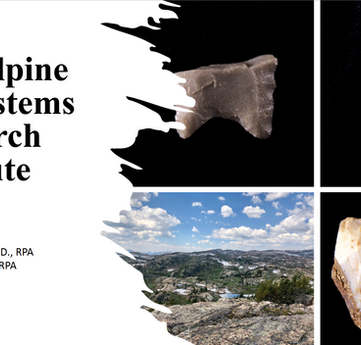Alpine Ecosystems Research Institute

AERI's Mission and Goals
Mission Statement
Alpine Ecosystems Research Institute (AERI) conducts multi-disciplinary research focused on clarifying the evolving relationships between humans, montane ecosystems, and their native species in order to educate the public on humanity's role in the past, present, and future of mountain conservation.
Who Are We?
Alpine Ecosystems Research Institute (AERI) is a member-supported, grant-funded 501(c)(3) nonprofit that conducts multi-disciplinary research in high-elevation and mountainous ecosystems. Our mission is to promote the conservation and restoration of montane ecosystems by conducting cutting-edge research, developing innovative restoration strategies, and engaging in public education and outreach efforts. Our team of experts is dedicated to advancing the understanding of these complex systems and providing actionable insights that will help protect them for generations to come!
AERI, originally established in 2018 as the Beartooth Ecosystems Alpine Archaeological Research (BEAAR) Project, is an ongoing interdisciplinary undertaking that investigates behavioral, technological, and environmental foci associated with evolving human-mountain relationships over the late Pleistocene and Holocene in the mountain ranges of the Greater Yellowstone ecosystem and Rocky Mountain Ranges. By focusing on the documentation of ancient cultural landscape use, biocultural interaction, and paleoenvironmental proxies, AERI has begun to clarify how ancient cultures behaviorally, technologically, and demographically adapted to and evolved with high-elevation environments spanning the past 13,000 years on the Yellowstone Plateau.
Our Goals
Conduct research to improve understanding of montane ecosystems
Develop innovative strategies to promote conservation
Engage in public education and outreach efforts to promote awareness















